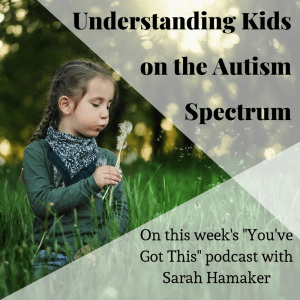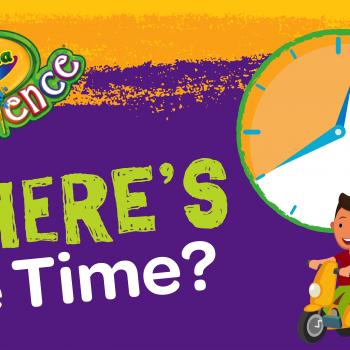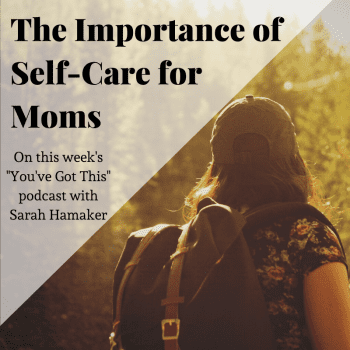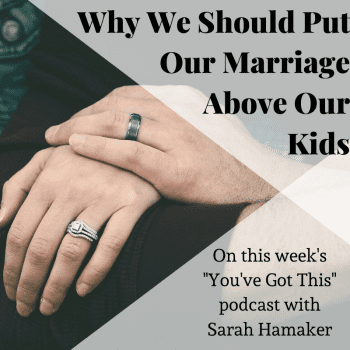
The following is an excerpt from my interview with Merriam Sarcia Saunders on my podcast, You’ve Got This.
Merriam Sarcia Saunders, LMFT, is a licensed psychotherapist and ADHD Certified Clinical Services Provider specializing in ADHD, autism and learning disabilities. She is an adjunct psychology professor at Dominican University and a children’s author. Her picture books, My Whirling, Twirling Motor and My Wandering, Dreaming Mind (Magination Press/APA) put a positive spin on childhood executive functioning issues. Connect with her at HowToParentADHD on Instagram/Facebook.
Now that school is in session, our kids are coming in contact with kids who are on the autism spectrum disorder. And I think most of us—parents and kids—want to be helpful and supportive, but we don’t know how. Can you talk a little bit about maybe what kind of behaviors these kids may exhibit, so we can be prepared to support rather than condemn?
Merriam: Yeah, absolutely. And I love that focus of really wanting to step in and help. The autism spectrum disorder is called a spectrum disorder for a reason. I think it’s important to understand that not all children are going to present with the same kinds of behaviors and the same kinds of issues. There’s a great range from very high functioning behaviors to children who struggle with some more difficult issues. But here are some of the commonalities.
A difficulty with social interactions—that might be anywhere from a misunderstanding of social cues all the way to an inability to communicate vocally, and as well as a combination of some type of repetitive behavior or what we call “stimming,” which is maybe hand flapping or rocking back and forth or repetitive noises to singular obsessions and focus on particular issues, such as an obsession with trains. Behaviors like that sometimes make it difficult for other children to understand how to interact with a child who only wants to talk about trains, if that’s what they’re interested in. Also children on the spectrum can have a lot of sensory issues. So they might be highly, highly sensitive to noises or temperatures or lights, textures, and this makes it difficult for them to interact with their environment and also can make it difficult for other children to understand what they’re going through when they don’t have a difficulty with that same issue. For example, you might see some children on the spectrum using ear muffs or some kind of noise-cancelling headphones in a classroom setting, which can also sort of isolate.
Whatever age your child, anytime someone looks a little different, sometimes that can be scary to a child. So just kind of helping them talk through some of these things, saying, “Yes, I see that Bobby does wear headphones in the classroom. The loud noises may really bother him.” Instead of just saying, “Oh yeah, that’s kind of weird,” or just not ignoring it or just not bringing it up. I think we can help our kids to think about that empathy for others.
Merriam: Absolutely. Sometimes by bringing it back to your own child’s experience can help too. You might know that your child likes to sleep with a night light or really dislikes certain foods. You can bring it back to their experience and say, “It’s a little bit like how you hate peas. You really just don’t want to eat peas. Little Bobby who’s on the spectrum also dislikes loud noises.” So, if you can relate it in that way to we’re all different and our differences are just not the same, that can work well with kids.
 I love your example of relating it because there’s all kinds of things our kids don’t like to do or they prefer not to do. When you can remind them, yeah, I know Johnny only wants to talk about trains, but there are subjects that you really love and that’s the only thing you can talk about at times. Because all kids, no matter who they are, go through stages where all they want to talk about is one thing.
I love your example of relating it because there’s all kinds of things our kids don’t like to do or they prefer not to do. When you can remind them, yeah, I know Johnny only wants to talk about trains, but there are subjects that you really love and that’s the only thing you can talk about at times. Because all kids, no matter who they are, go through stages where all they want to talk about is one thing.
Merriam: I think another misunderstanding about children on the spectrum is that they have no empathy or they’re not in touch with their feelings. That couldn’t be farther from the truth. The reality is that this is a disorder that involves a misunderstanding of other people’s feelings in a given moment because they have difficulty reading facial expressions and social cues. But once they understand that the feeling is there in the moment, they’re absolutely able to empathize and really feel for another child. Oftentimes because it’s so difficult to understand social situations, a child on the spectrum might remove himself from that situation. So it might appear that they don’t want to have friends or are staying away from other children but that also is so untrue. They really do want that social interaction, want to have friends. They just don’t really understand how to go about it. It’s not a skill that they were born with, that was innate to them. It’s one they have to develop and learn.
That is a great point because whether the kids are on the spectrum or not, I always try to encourage my children to be that friend for those who maybe don’t have many friends or not sure how to make friends. Just encouraging our kids to kind to other kids—not that they have to be best friends!—but sometimes just reaching out and sitting with someone at lunch or playing during recess. These little low-stakes interactions and small gestures can work in a variety of situations but I think especially with kids who maybe have trouble with those social interactions.
Merriam: We should also encourage our children not to give up too because the first overture of a child might make, “Do you want to come sit with us” might be met with a “no” because the child on the spectrum is just sort of uncomfortable with that, doesn’t know what to do about it. But don’t give up and remember to invite them to the birthday parties and go to their birthday party if you’re invited. These children tend to get left out and forgotten. Sometimes, other children don’t necessarily want to be associated with a child who’s different. It’s hard for them all at school and it takes a little bit more parent involvement to guide our children. I encourage parents to reach out to the parent of the child on the spectrum and just say, “Hey, how can we help? Is there anything you and your child need that we can help with socially?”
I definitely do want to talk about that because I find that it can be uncomfortable if I have a kid come over and you can tell that things are not quite going right for whatever reason when playing with your kids. But knowing a little background can help me as the parent to guide my own children through their play when things get a little rocky, as they do at times. It’s worth it to help them develop those friendships, to make that effort.
Merriam: You really can make an impact on another family’s life. Just as much as the child might be feeling isolated at school, the parent is probably feeling equally isolated. It’s not necessarily what we signed up for as parents when we have a child who’s not neurotypical, and there can be a lot of feelings, guilt, sense of failure as a parent, “Was there something I did?” Just having other people that you feel safe with and that welcome the parent with the child on the spectrum can make such a huge difference on the family side.
I’m hoping that we’re kind of swinging back into the inclusive mindset collectively because just like when it’s the kid who has a wheat allergy, making sure that they have something to eat at a birthday party that you’re hosting, you should just make sure that kids on the spectrum are comfortable in your home. I think we think we have to rearrange our whole entire lives to make these things possible, but I don’t think that’s the truth. There are small things we can do to make kids and their parents comfortable in our home.
Merriam: Just asking the parent, “Are there any special concerns I should be aware of?” And usually, she might just say, “Oh, he really hates bright lights or loud sounds and transitions can be difficult so just give him plenty of warning if you’re moving from one thing to the next. And if he constantly talks about trains, it’s okay to say, ‘Hey, can we talk about something else? Trains are great but let’s talk about this.’” That actually helps the child too because one of the things he may need to work on is understanding that not everyone wants to talk about trains and it’s okay to talk about other things. So that could be helpful.
I think above all, it’s empathy, not pity. But it can be extremely challenging. This parent has to figure out three steps ahead of what they might need to get ready for because their child can’t really roll with things. There’s a rigidity, and there needs to be a structure and routines and they can get set off very easily, and there might be big tantrums and emotional outbursts. Never ever imagine that if they just parented differently, this child would behave differently. There’s just no need for judgment if parent walks through their world feeling very judged.
Tantrums most likely some type of physiological response to something in their environment at the time that the parent just couldn’t foresee. They had no idea that fluorescent lights would upset their child in that moment. Even for neurotypical children, I really believe that most meltdowns and tantrums are a response to an unmet need. I don’t think those children want to tantrum.
Just the note that in the moment when the tantrum is happening, the best thing I think we can do is not stare at them. And if there’s a way we can help, we should offer, like walking the parent’s grocery cart to the checkout line, or helping to put the boxes of cereal back on the shelf that the child knocked off.
Merriam: That response has so much compassion and that’s exactly what that mom might need in that moment, is just to feel supported by a stranger, that “Hey, I got it. We’ve all been there.”
The truth of the matter is that if any of us have kids and we’ve ever taken those kids out in public, our kids have had meltdowns. I don’t care how well-behaved your children are, every child at one point in their life is going to have a public meltdown. So we’ve all been there—let’s just own it and have that compassion for that child and that mom or dad, they’re trying their best.
Merriam: For a parent with a child on the spectrum, that meltdown might be something that happens repetitively throughout their day. We might be dealing once a week with a public tantrum, this is just something that’s constant for them often, so having that compassion.
To hear more great advice and stories from Merriam, listen to “Understanding Kids on the Autism Spectrum” on the “You’ve Got This” podcast.












